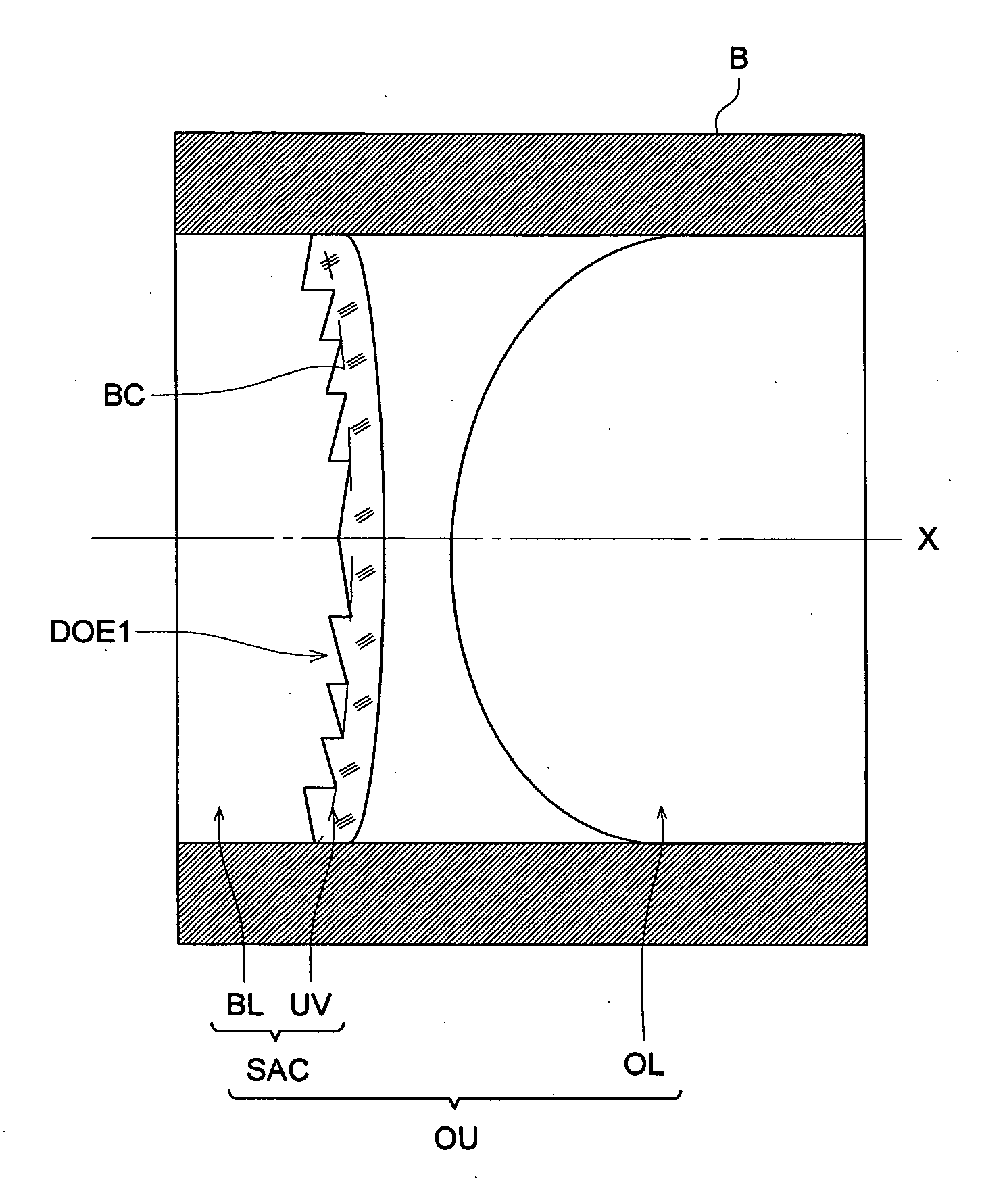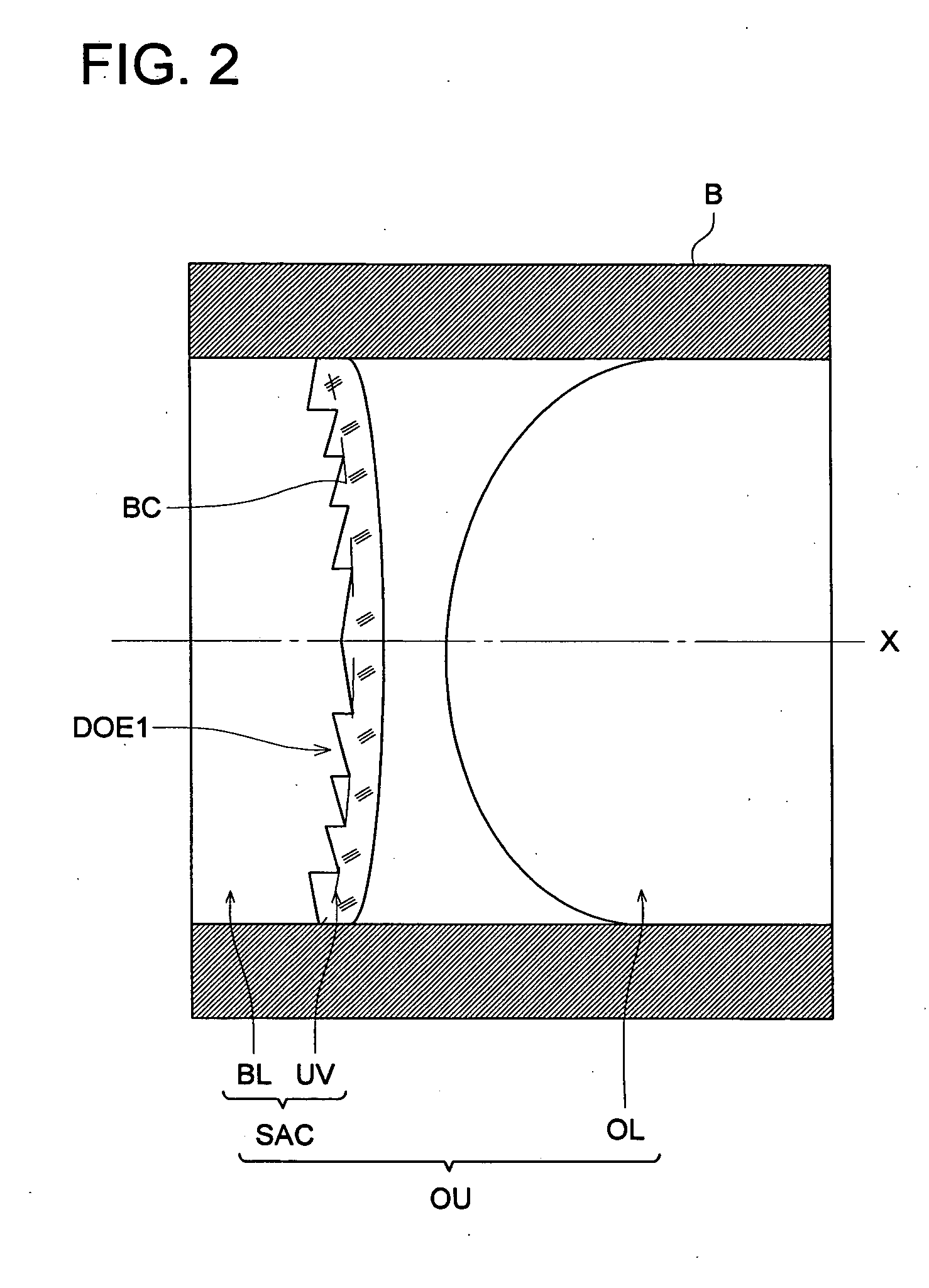Objective optical system, optical pickup apparatus and optical disk drive apparatus
- Summary
- Abstract
- Description
- Claims
- Application Information
AI Technical Summary
Benefits of technology
Problems solved by technology
Method used
Image
Examples
examples
[0460] The following provides a detailed description of the best form of embodying the present invention.
embodiment 1
[0461] Referring to the drawings, the following describes the first embodiment of the present invention. An optical pickup apparatus PU using an objective lens unit (the objective optical system) OU as an embodiment of the present invention will be described first, with reference to FIG. 1.
[0462]FIG. 1 is a schematic view of the structure of the optical pickup apparatus PU capable of appropriate recording / reproducing of information using any of a high-density optical disc HD, DVD and CD. In terms of optical specifications, the high-density optical disc HD has the first wavelength λ1 of 405 nm, the protective layer PL1 having a thickness t1 of 0.1 mm, and the numerical aperture of NA1 of 0.85. The DVD has the second wavelength λ2 of 655 nm, the protective layer PL2 having a thickness t2 of 0.6 mm, and the numerical aperture NA2 of 0.65. The CD has the third wavelength λ3 of 785 nm, the protective layer PL3 having a thickness t3 of 1.2 mm, and the numerical aperture NA3 of 0.50. Howe...
embodiment 2
[0513] Referring to the drawing, the following describes the second embodiment of the present invention. The same structures as those of the aforementioned first embodiment will not be described to avoid duplication.
[0514] In the present embodiment, the base lens BL is made of resin, and a resin layer UV as an ultraviolet curing resin is laminated on the surface of this base lens BL.
[0515] In the present embodiment, the objective lens unit OU is characterized by addition of a phase structure different from that of the diffractive structure DOE1.
[0516] To put it more specifically, the objective lens unit OU in the present embodiment is characterized in that the aberration correcting element SAC is formed coaxially into one structure integrally with the objective lens OL whose aspherical structure is designed in such a way that spherical aberration will be minimized with respect to the first wavelength λ1 and the thickness t1 of the HD protective layer PL1, through the lens frame B...
PUM
 Login to View More
Login to View More Abstract
Description
Claims
Application Information
 Login to View More
Login to View More - R&D
- Intellectual Property
- Life Sciences
- Materials
- Tech Scout
- Unparalleled Data Quality
- Higher Quality Content
- 60% Fewer Hallucinations
Browse by: Latest US Patents, China's latest patents, Technical Efficacy Thesaurus, Application Domain, Technology Topic, Popular Technical Reports.
© 2025 PatSnap. All rights reserved.Legal|Privacy policy|Modern Slavery Act Transparency Statement|Sitemap|About US| Contact US: help@patsnap.com



